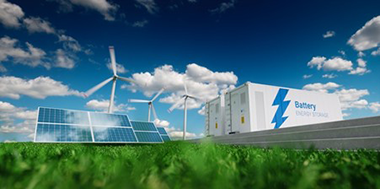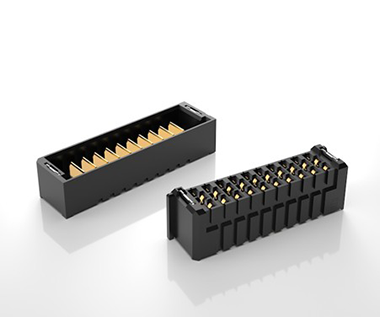

[Sponsored] The technology behind power is changing. The emergence of new sources of energy has combined with the growth of Lithium-ion batteries to create Energy Storage Systems (ESS). However, what has not changed is how we connect the power to the user. Connectivity has become more important as designers pack more power into smaller spaces, all while managing thermal loads and ensuring efficiency. Connectors play a critical role in power delivery and thermal management.

The problem that connector designers face is a little different from those in the semiconductor industry. In the world of semiconductors, new developments mean that products more than a few years old are behind the times. The same is not true in the connector industry. After all, a connector that could carry 13 A at 240 V AC when it was designed 40 years ago still performs just as effectively today. The electrical performance of the connector means that it remains a viable choice.
The terminal
The terminal itself is the heart of the power connector. It is the one component for which the rest of the connector exists. It joins the two separate elements of the power circuit, whether they are cables, busbars, or traces on a printed circuit board (PCB). Almost all connectors use a two-piece design where one terminal makes physical contact with its counterpart, allowing electrical current to flow. The goal is to make this connection with the minimum electrical resistance, and so the design of this interface is vital to the performance of the connector.
When transmitting power, size is almost everything. If we compare electrical circuits to pipes and plumbing, a larger pipe has a greater capacity. The large cross-sectional area allows a greater rate of flow and reduces pressure. Conversely, a narrower pipe restricts the flow, just as a resistor limits the flow of electricity. For the same reason, the terminals of power connectors feature large conductors to keep resistance as low as possible.
Many power connectors use circular pins. If they are machined from a solid bar, they offer a good cross-sectional area and a low resistance. There is a reason why a lot of circular connector designs use solid pins such as these, from industrial connectors to military types. The fact that machined terminals are also closely associated with high reliability may also help explain their use.
The alternative to machined contacts is provided by stamped-and-formed construction. They are created by folding a flat sheet of metal into a three-dimensional shape, forming a terminal that is suitable for use in a connector. Suitable for the mass market, stamped-and-formed contacts are cheap to manufacture. However, their drawback when used as a power terminal is that the cross-sectional area is limited to the thickness of the original sheet. When folded into a circular pin, they are hollow.
If size were the only important consideration of power terminal design, stamped-and-formed pins might not ever be considered for high-current applications. However, large cross-sectional area is not the only vital attribute of a power connector. The other is governed by the geometry of the contact between the two terminals. A successful power terminal maximises the contact surface area between the two terminals. While cylindrical pin terminals have a large cross-section that is ideal for carrying a large current, they are limited by the area of contact between the male and female halves.
Power blades
In contrast, while blade terminals feature a smaller cross section and lower current ratings, they boast a large surface area for contact between the two halves. Their slim profile is another advantage that is increasingly useful in today’s space-constrained applications.
PCB-mounted power connectors have always been important in rack-mounted applications. In today’s data centre installations, board-mounted connectors are usually rectangular. These long, slim connectors can mount a larger number of blade terminals than if using circular pins, even though individually they offer a lower current rating.

While this may sound counter-intuitive, it is an important strategy for designing high-power systems. The key concept to understand is that of power density. It is possible to obtain a better total current rating with connectors that use a larger number of smaller terminals, and in that way a blade terminal may be mightier than the pin. Manufacturers are offering PCB-mounted power connectors that take advantage of the blade terminal.
The slim design of blade terminals offers another advantage for the modern designer. Heat management has become a serious concern across a wide range of applications. The conventional pin is less efficient for dissipating the heat associated with power than the larger surface area of the blade terminal.
The mPOWER series of power connectors from Samtec uses blade terminals to maximise power density in a small form factor. Featuring a pitch of 2 mm and a current rating of up to 18 A per circuit, the mPOWER series can provide a 40% reduction in PCB footprint compared to more conventional designs. It is also designed to perform in challenging conditions and exceeds the rigorous demands of Samtec’s Severe Environment Testing Initiative.
Conclusion
As we strive towards a carbon-neutral economy, many of us are making the change from traditional, fossil-fuel energy sources to renewable alternatives. Energy storage solutions, microgrids, and high-performance batteries will play a pivotal role in enabling this transition, and connectors will be an important component of these systems.
However, power connectors do not need to be bulky and cumbersome. Smaller blade-based connectors offer distinct advantages in certain situations, especially critical with the growth of compact batteries and alternative energy. The same technology can be applied to almost any application within electronics, from electric vehicles to the data centre. Samtec’s mPOWER connector delivers the power density demanded by the latest energy applications.
| Tel: | +27 11 425 1400 |
| Email: | [email protected] |
| www: | www.spectrumconcepts.co.za |
| Articles: | More information and articles about Spectrum Concepts |

© Technews Publishing (Pty) Ltd | All Rights Reserved